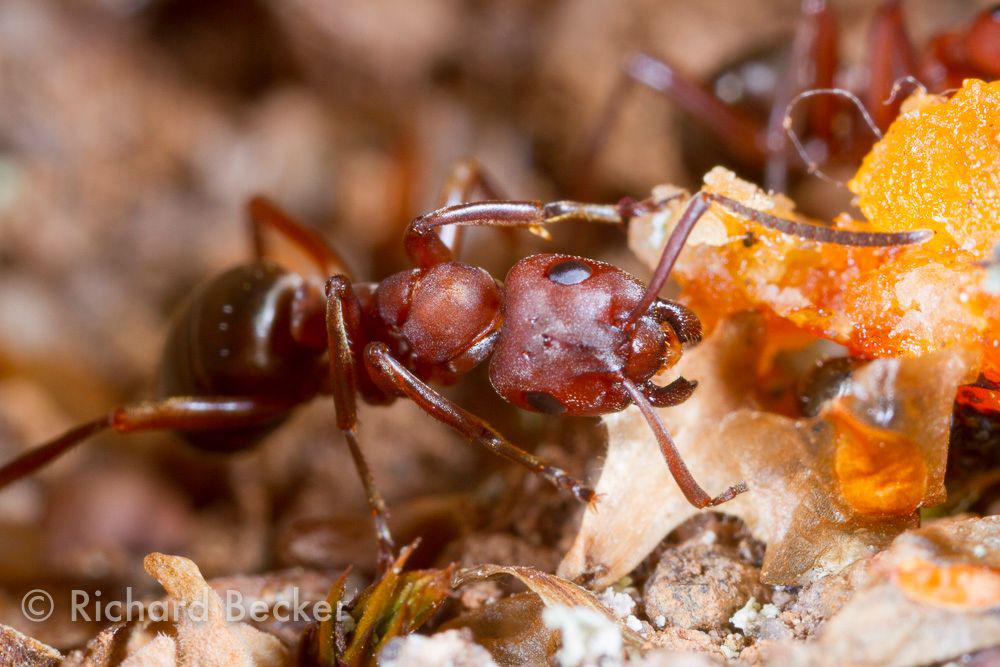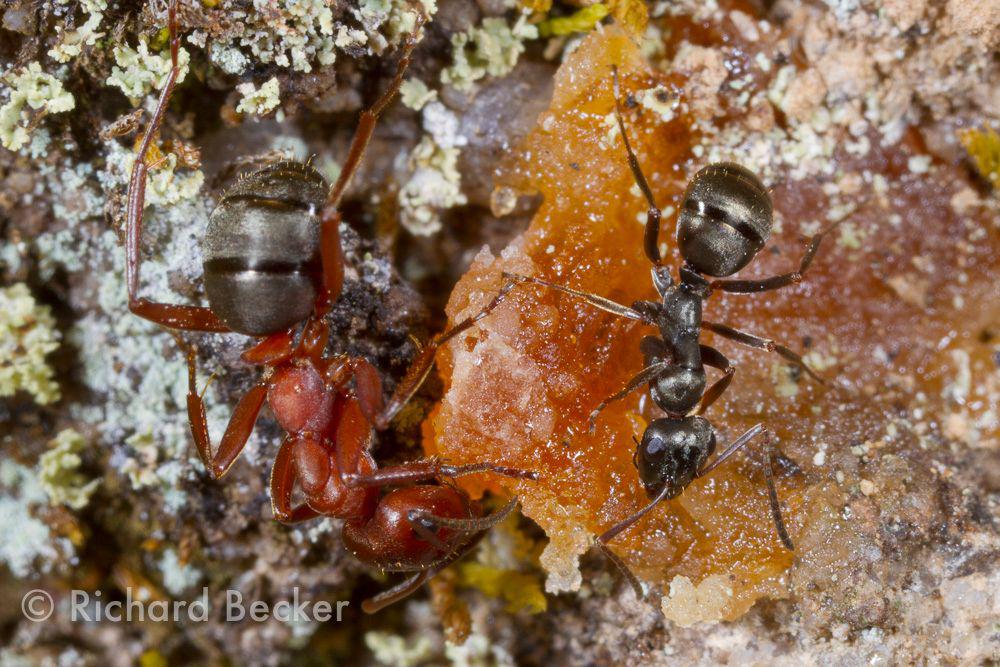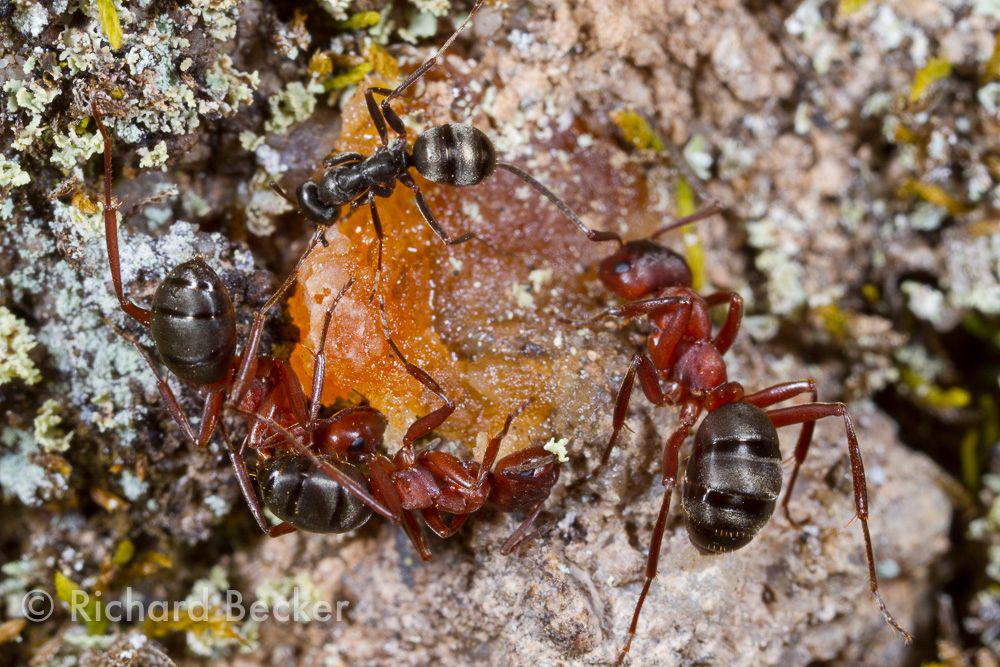16 Oct 2018
The Slave-making ant Formica sanguinea has a strange distribution in Britain. Common in parts of southern England and central Scotland the only other locations are a few sites scattered in the counties along the Welsh/English border.

Looking for a different area to walk on what looked likely to be the last warm day of the year we took a trip to Nash Wood near Presteigne, a largely commercial forest managed by National Resources Wales, but straddling the border with England. It also has a record of F. sanguinea being present in the wood.
Nash Wood is a long way from any other F. sanguinea sites, and the last sighting (and the only reliable one I can find) was about 20 years ago, so we were not optimistic about finding the species. The wood covers a steep sided ridge, on the warmer south-facing slope are areas of conifer plantation, native deciduous woodland and some areas of over-grown and partly shaded native heathland. These last areas and the forest tracks bordering them seemed the most likely areas for finding scarce warmth-loving ants so we made our way through the wood to them. Most areas proved to be very overgrown and cool, but eventually we came out into a more open area very near to the area of the 20-year old record and under the first stone I turned over was a colony of F. sanguinea.

In
total we found 3 colonies on a bank along the side of a forest track,
in a section about 250m long. This was the only area in the wood that
appeared at all suitable and the ants were using it all. Hopefully NRW
will do some management to increase the area available as the site seems
highly vulnerable to shading from growing trees or careless management
of the forest track.
Often strong, mature colonies of F. sanguinea have no slaves of other species, they are a faculative slave-maker, not an obligatory one. Mature colonies have several queens and are able to form new colonies by splitting. Each of the Nash Wood colonies though had workers of other species within the colony, perhaps indicating that they are struggling to rear enough workers of their own species. Raiding neighbouring colonies of other species being a easier option to boost worker numbers in the colony. Each nest had workers of Formica fusca as slaves, and at least one also had some Formica lemani workers as well. Something I only realised later when I examined a couple of specimens I brought back for checking.
Next year the plan is to return and get some better photos and also see if the ants are present in any other parts of the wood and surrounding area.
